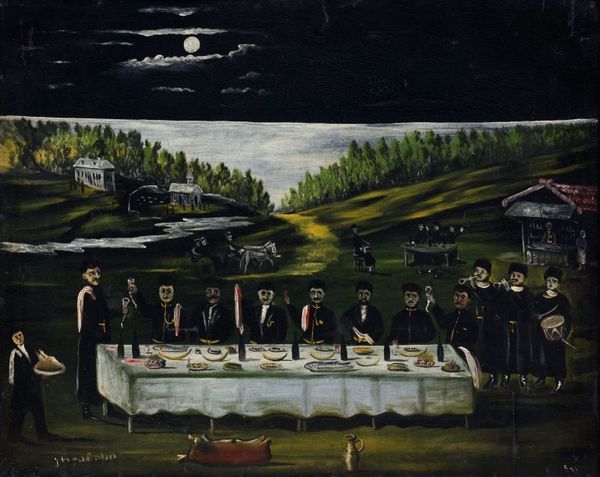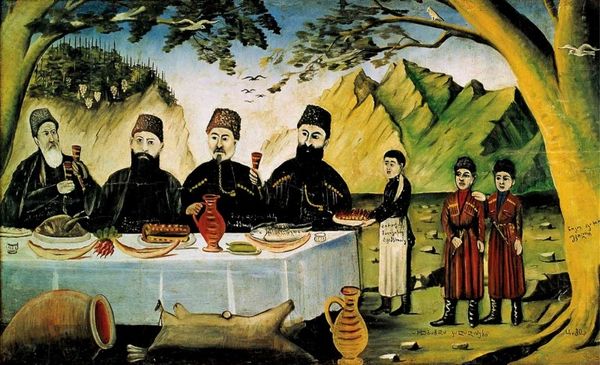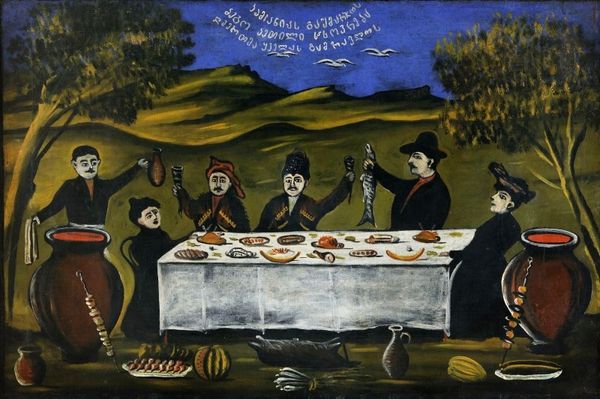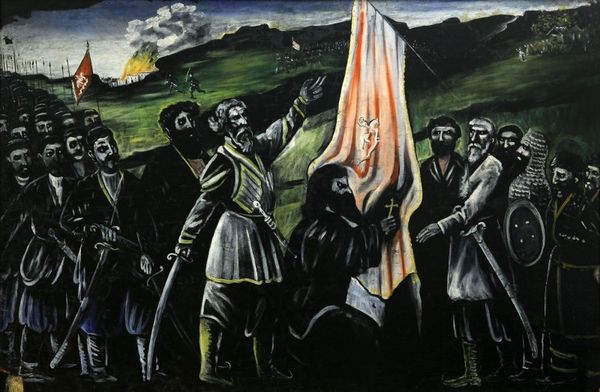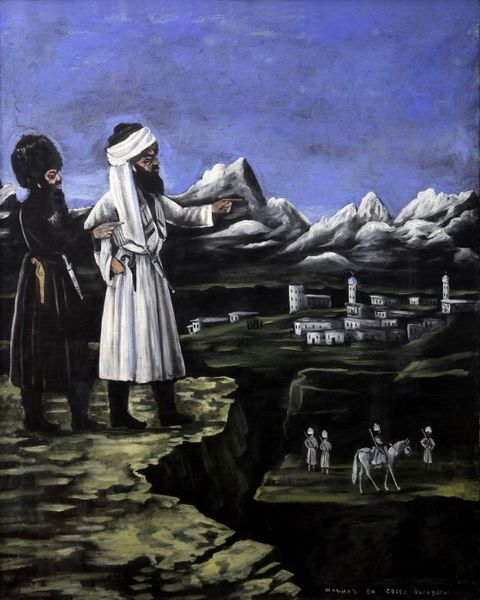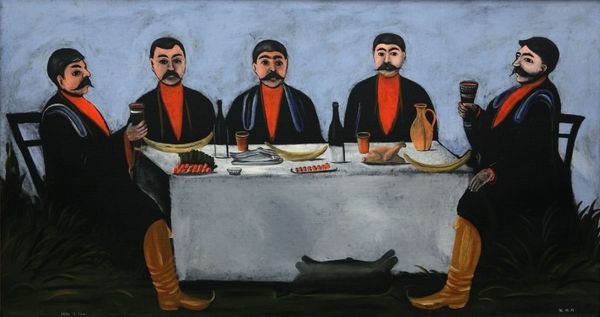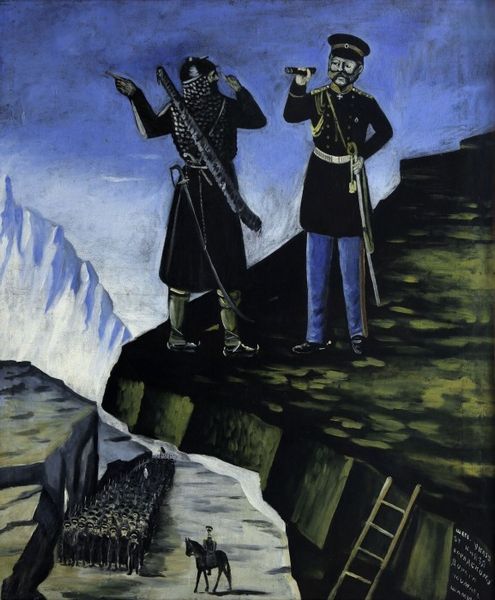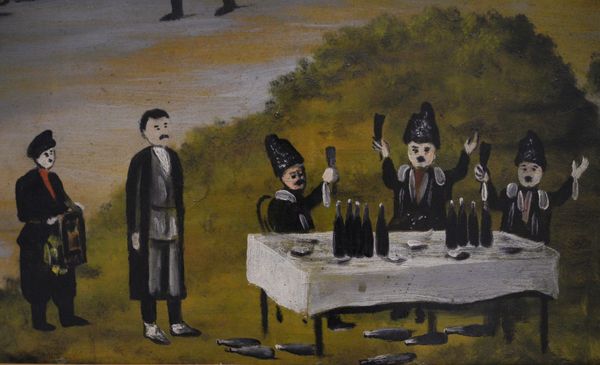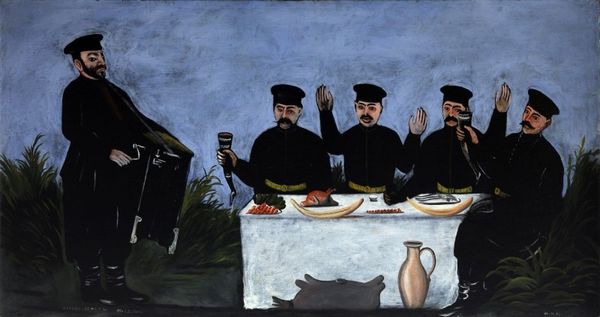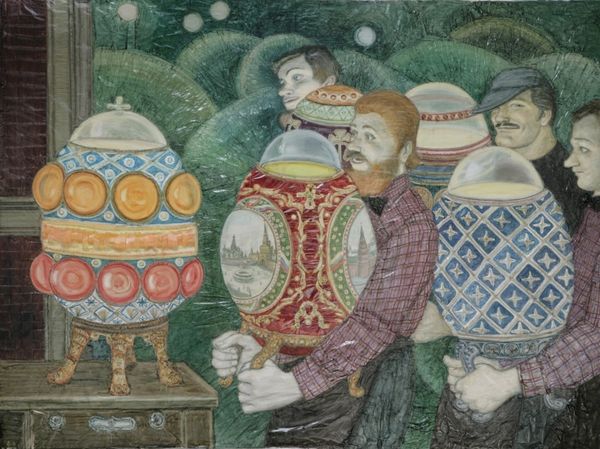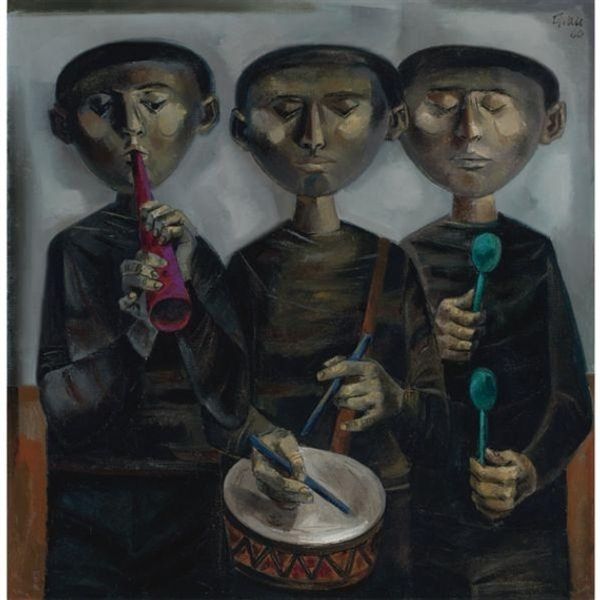
The feast of three Nobles in the valley 1909
0:00
0:00
nikopirosmani
Art Museum of Georgia (AMG), Tbilisi, Georgia
painting, impasto
#
sky
#
fantasy art
#
painting
#
landscape
#
figuration
#
impasto
#
folk-art
#
mountain
#
surrealism
#
genre-painting
#
surrealist
#
realism
Dimensions: 138 x 120 cm
Copyright: Public domain
Curator: This is "The Feast of Three Nobles in the Valley" by Niko Pirosmani, painted in 1909. You can find it here at the Art Museum of Georgia in Tbilisi. It is an oil painting done in Pirosmani's distinctive style. Editor: It’s remarkable, instantly captivating. There's something almost theatrical about the stark lighting and those very serious figures. Curator: Absolutely. Pirosmani's use of light always directs our gaze, doesn’t it? Look how the dark outlines contrast with the vibrant green of the landscape. For me, those mountains act as stoic watchers over the gathering. Editor: Yes, the symbolism is so evocative. The feast itself is laden with meaning—a shared ritual of camaraderie and perhaps prosperity. Notice the prominence of the wine, and the lush natural world in the background. Pirosmani certainly imbued mundane scenes with archetypal resonance. The clothing signifies belonging, a social station that defines the image. Curator: Indeed, wine is such a crucial cultural marker for Georgia. Pirosmani consistently painted feasts; I wonder, did he see these gatherings as preserving Georgian identity? The subjects wearing chokhas, the traditional male attire, reinforce a strong connection to cultural roots, especially significant given Georgia's place in the Russian Empire. The clothing emphasizes a link to the cultural preservation happening in the early 20th century. Editor: That political context really enriches the work. So, beyond the surface celebration, this could be read as a visual assertion of Georgian heritage. Curator: Precisely! Art so often takes on a life of its own within historical shifts. Pirosmani may not have directly intended the sociopolitical meaning, yet his celebration of traditions became infused with it. Editor: It reminds us that imagery always operates within specific times, places and power structures. I now perceive the painting not just as a scene of feasting but a declaration of cultural resilience, through what appears to be the quietest everyday celebration. Curator: Seeing the painting with fresh perspective truly breathes a richer meaning into the landscape and figures—almost like understanding how that jug of wine may hold stories of past and hope for the future!
Comments
No comments
Be the first to comment and join the conversation on the ultimate creative platform.

